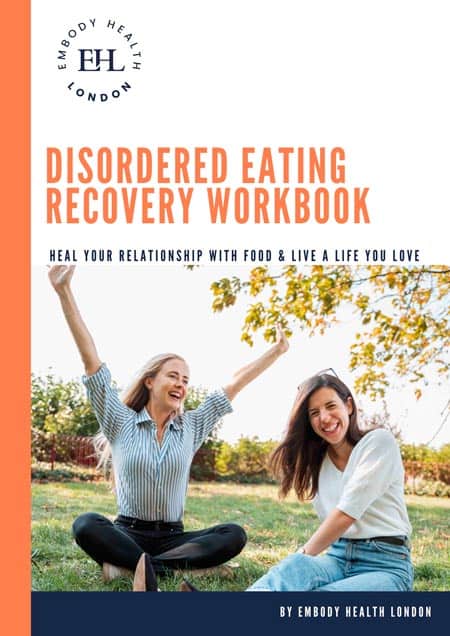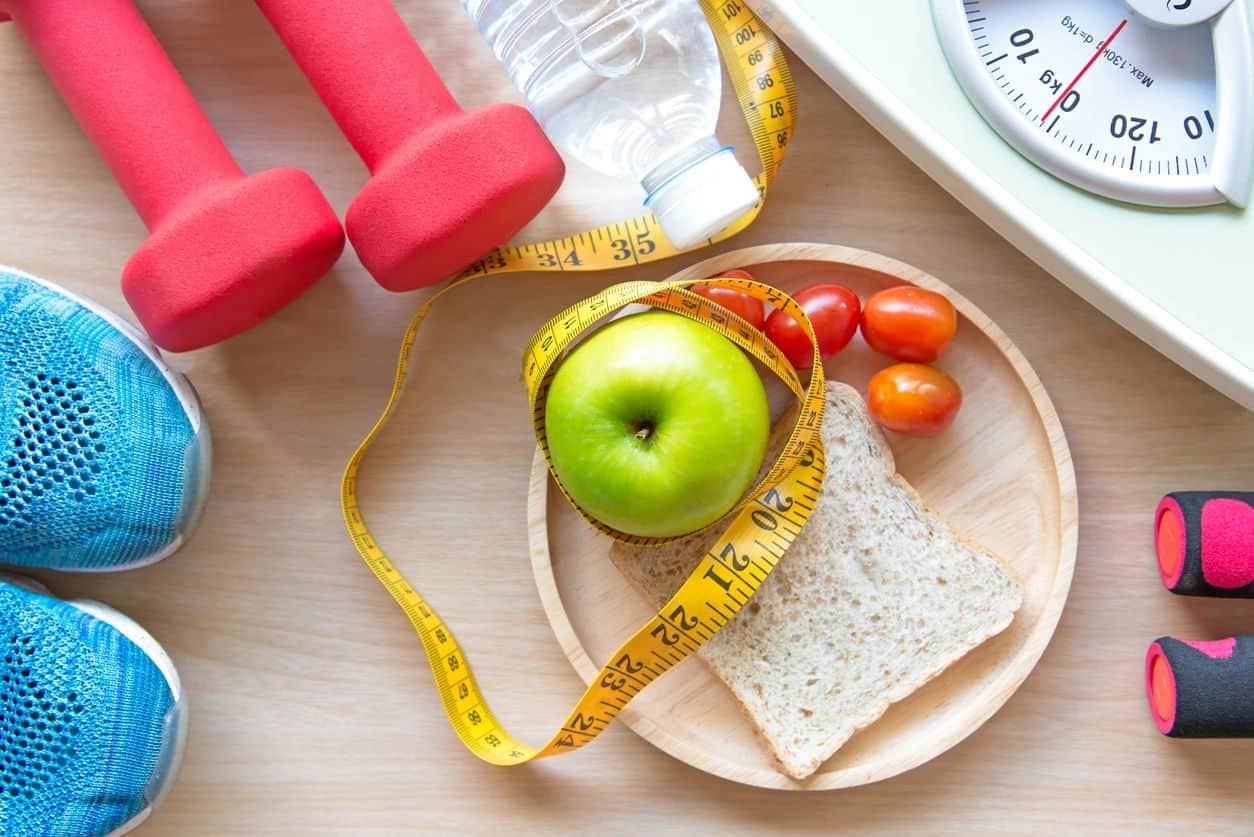Blog

Signs that you are over-exercising and what to do
How to recover from RED-S and find optimal health
The notion that “exercise is good for you – do more!” has been hammered into our heads from a young age and to what end? You may think the more the better, but not when it comes at the expense of your health.
Some of us may think that having no period is a blessing – it means no cramps, less bloating, no period diarrhoea , and no (okay, maybe less) mood swings. But when you begin to understand the health consequences of losing your period, you may think again.
The combination of overtraining and under fuelling ultimately leads to burnout and potentially a whole host of serious health consequences often indicated by a loss of period (but not limited to) that will be presented in this blog article.
Let us also be clear, however, that whether you have a uterus or not – under fuelling has long-term consequences and can affect anyone that is pushing themselves beyond their limit. That is, whether you are training to stand on the Olympic podium or an amateur athlete – the risk equally presents itself.
What is RED-S?
The term ‘Relative Energy Deficiency in Sport’ (RED-S) was a condition formerly known as the ‘Female Athlete Triad’. In short, this condition affects women and men, and it can be characterised by energy deficiency relative to the balance one has between dietary energy intake and energy expenditure; required for health and activities of daily living, growth and sporting activities leading to multi-system dysfunction. (1)
Our bodies need a certain amount of energy to function and stay alive. On top of that, if we do physical activity or sport, we require even more energy. Therefore, if you do not put in enough energy for the amount of work your body is doing, it can result in RED-S.
The consequence of that disequilibrium is that when your body does not have enough energy to support its needs, it will prioritise organs and functions vital for health and life, whilst other systems that are not deemed as ‘essential’ will start to turn off, such as reproductive health.
It is like if your phone battery reaches 30%, it may go into battery saving mode, and start putting different apps to sleep in the background to save energy.
For females, changes in menstruation are a clear sign that there is a problem. Whether their period becomes, lighter, erratic or stops completely (called amenorrhea). For males it can be harder to identify the symptoms. To learn more tips on how to restore your period read this article.
Symptoms can include anything from a drop in libido, a drop in serotonin levels, changes in bowel habit (often misdiagnosed as symptoms of IBS), finding yourself more prone to injury, lowered immune function and not being able to train and perform at the level you once could.
These consequences can have serious implications for many bodily systems aside from reproductive health resulting in short-term and long-term impact on health and performance. See figure 1 and 2 for visual diagram of potential health and performance consequences.
This can include (2):
- Functional hypothalamic amenorrhea
- Nutrient deficiencies including anaemia
- Disordered eating and eating disorders
- Increased risk of infections or illness
- Poor post-exercise recovery
- Increased risk of injury
- Psychological distress; including anxiety and depression
- Hormonal and metabolic abnormalities
- Poor bone health and stress fractures
Types of RED-S
Dietitian Renee McGregor describes an important difference in voluntary vs involuntary RED-S.
Involuntary RED-S
Involuntary RED-S is unintentional under-fuelling. The athlete is not intentionally restricting intake, but instead is struggling to fuel adequately for a variety of reasons such as food availability, lack of nutritional education and support, life demands, stress and others.
Voluntary RED-S
Voluntary RED-S is conscious restriction of energy intake and/or overtraining. This typically has a psychological component leading to anxiety, body image concerns, disordered eating, and for some individuals a clinically diagnosable eating disorder.
How to treat RED-S?
If you suspect you have RED-S, it is important to first consult your GP, who may then involve medical, dietetic and mental health support depending on your individual situation. A multi-disciplinary approach is recommended in the treatment for RED-S, particularly if there is any concern about disordered eating. (2, 4) Treatment should focus on reversing the underlying cause: low energy availability.
ONE. Energy Balance and Carbohydrate Availability
Correcting energy balance is an essential treatment of RED-S to address the fundamental cause of low energy availability. In adolescents and women with functional hypothalamic amenorrhea, correcting the energy imbalance is necessary to improve hypothalamic–pituitary–ovarian (HPO) axis function. In order to do this, behaviour change is needed to increase caloric consumption, improve nutritional status (such as vitamin D and calcium), and potentially decrease exercise activity with the support of a registered dietitian. Weight gain may be necessary as part of this process. (5)
Carbohydrates are needed to fuel training and the amount of glycogen stored in muscles has a direct impact on performance. Therefore, adequate carbohydrate availability around training is essential, particularly for bone health. 6, 7 For most athletes, high-carbohydrate intakes are required. Carbohydrates consumed before exercise results in improved performance. 7 Read an article here where two dietitians explain what to eat before and after a workout.
TWO. Psychological Support
Cognitive behavioural therapy has been found to be helpful in treatment of RED-S, both to help cope with daily stresses and may be supportive of the behaviour change required to regain energy balance. (1, 5, 8, 9).
Studies have shown that CBT results in higher rate of return of ovulatory function for women with functional hypothalamic amenorrhea. (6, 8, 9) Therapy can also be helpful if dealing with perfectionism and/or body dissatisfaction which is often seen in athletes, particularly female athletes, and can exacerbate risk of disordered eating. (10)
THREE. Reduction in exercise intensity
For many recovery may mean reducing the overall intensity of their workouts or training sessions – especially endurance training – while for others it may mean stopping training all together. The evidence demonstrates that a structured re-introduction to training is helpful and should first start with resistance training/ body weight strength and conditioning. Meanwhile this is when an appropriate fuelling routine can be established to ensure adequate nutrition. Endurance training should be eased into and last but not least, high intensity exercise is ideally the last type of activity to be re-introduced as it requires the greatest energy demands.
What is NOT recommended
- Oral contraceptive pill to regain menses – this masks amenorrhoea with withdrawal bleeds and bone loss may continue. 5
- Fasted training – always fuel before, after and in some cases during training. Exercise on an empty stomach will almost certainly lead to fatigue, decreased endurance and even muscle loss. Alongside this, will hinder recovery from RED-S. If you can, have a balanced high-carbohydrate meal 2-4 hours before training. If that is not possible, ensure you have a snack.
- Snack ideas 1 – 2 hours before training7:
- Fresh or dried fruit
- Smoothie
- Yogurt
- Milkshake
- Energy or nutrition bar
- Toast with honey or jam
- Porridge or cereal with milk
- Snack ideas 1 – 2 hours before training7:
If you suspect you are struggling with RED-S and require support – our team of dietitians would love to support you. Book a free enquiry call with us to learn more about how our expert dietitians can help.
Zoe Light, RD
EHL Team x
References
- Mountjoy M, Sundgot-Borgen J, Burke L, Carter S, Constantini N, Lebrun C et al. The IOC consensus statement: beyond the Female Athlete Triad—Relative Energy Deficiency in Sport (RED-S). British Journal of Sports Medicine. 2014;48(7):491-497.
- Mountjoy M, Sundgot-Borgen J, Burke L, Ackerman K, Blauwet C, Constantini N et al. IOC consensus statement on relative energy deficiency in sport (RED-S): 2018 update. British Journal of Sports Medicine. 2018;52(11):687-697.
- Constantini NW. Medical concerns of the dancer. Book of Abstracts, XXVII FIMS World Congress of Sports Medicine, Budapest, Hungary, 2002:151.
- Joy E, Kussman A, Nattiv A. 2016 update on eating disorders in athletes: A comprehensive narrative review with a focus on clinical assessment and management. British Journal of Sports Medicine. 2016;50(3):154-162.
- Gordon C, Ackerman K, Berga S, Kaplan J, Mastorakos G, Misra M et al. Functional Hypothalamic Amenorrhea: An Endocrine Society Clinical Practice Guideline. The Journal of Clinical Endocrinology & Metabolism. 2017;102(5):1413-1439.
- Townsend, Rebecca1,2; Elliott-Sale, Kirsty J.1; Currell, Kevin2; Tang, Jonathan3,4; Fraser, William D.3,4; Sale, Craig1 The Effect of Postexercise Carbohydrate and Protein Ingestion on Bone Metabolism, Translational Journal of the ACSM: October 15, 2017 – Volume 2 – Issue 20 – p 129-137
- Bean A. The complete guide to sports nutrition. 8th ed. Bloomsbury Publishing; 2017.
- Berga SL , Marcus MD , Loucks TL , Hlastala S , Ringham R , Krohn MA . Recovery of ovarian activity in women with functional hypothalamic amenorrhea who were treated with cognitive behavior therapy. Fertil Steril. 2003;80(4):976–981.
- Michopoulos V, Mancini F, Loucks TL, Berga SL. Neuroendocrine recovery initiated by cognitive behavioral therapy in women with functional hypothalamic amenorrhea: a randomized, controlled trial. Fertil Steril. 2013;99(7):2084–2091.e1.
- Prnjak K, Jukic I, Tufano J. Perfectionism, Body Satisfaction and Dieting in Athletes: The Role of Gender and Sport Type. Sports. 2019;7(8):181.
















